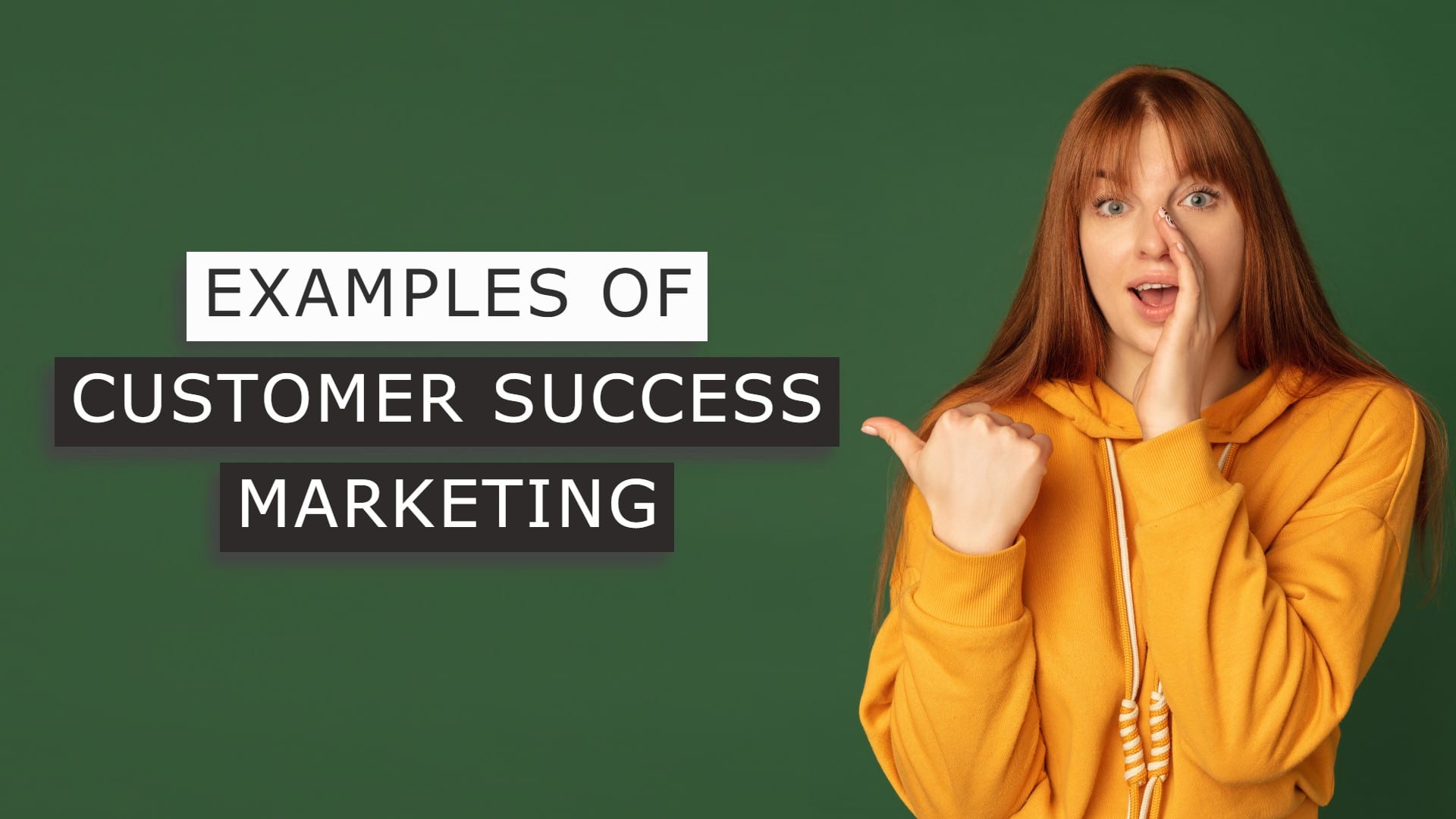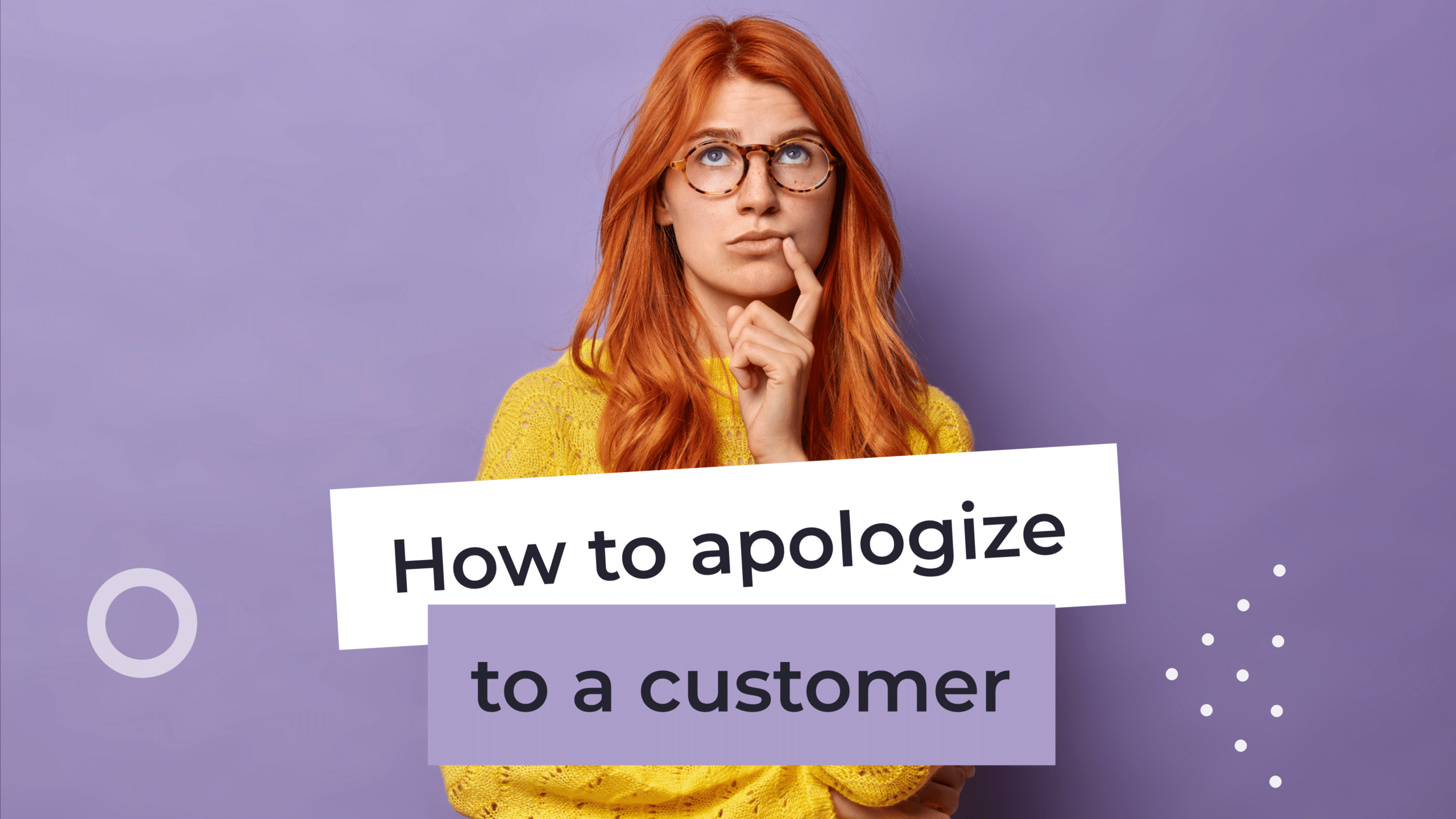In today’s fast-paced and highly competitive environment of B2B products and SaaS services, consumers have become increasingly demanding. And they’re more likely to walk away faster if the process of engaging with a company requires more effort than necessary.
So understanding the root causes of customer dissatisfaction proves crucial to the success of your business, particularly if it’s a SaaS business. What will help you out a lot, in this case, is running a gap analysis for customer service and then coming up with an action plan to improve customer satisfaction.
Running a gap analysis for customer service for your business will help you out immensely. It basically helps you provide high-quality customer service to your consumers while helping them achieve their goals. Not to mention that it will also play an important role in maximizing your business’s market position, market share, and financial results through increased overall customer satisfaction rates.
In this piece, I’m going to explain why a gap analysis needs to become a priority for your SaaS business and what you can do to ensure your customer experience consistently exceeds your customers’ expectations.
But first…
What Is Gap Model for Customer Service?
Although gap analysis was initially limited to the identification and management of service quality, in time, it has proven itself to be an ideal tool for the management of customer satisfaction. It tackles the difference between what the customers expect and what they perceive was delivered.
The Gap Model for Customer Service was developed by Parasuraman, Zeithaml, Berry (PZB). There’s also a tool for service quality measurement called SERVQUAL (service quality gap model) developed by them if you want to do some further research.
The main objectives of this Gap Model for Customer Service are to:
- Identify the gaps between customer expectation and customer perception;
- Close the gap and improve overall customer satisfaction levels.
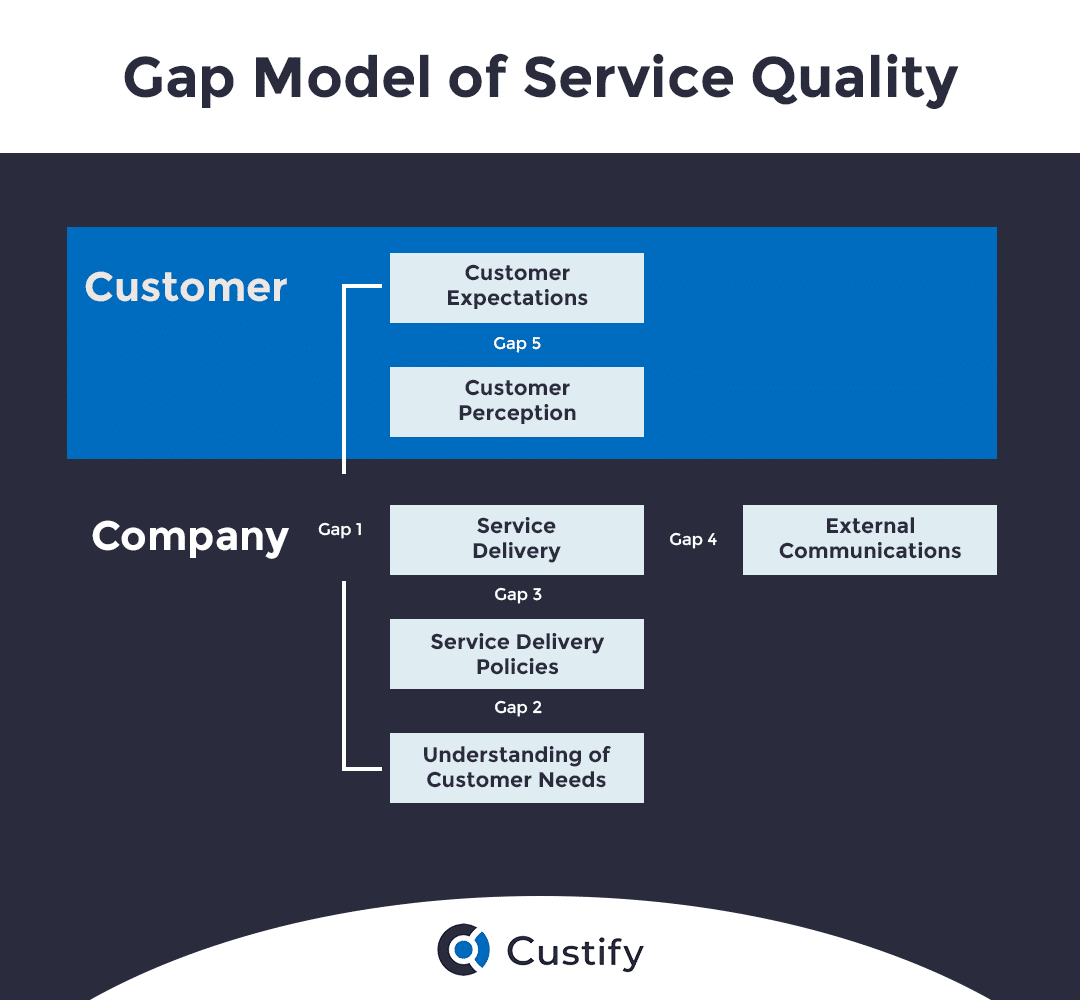
Explaining the Five Gaps of Customer Service Quality
The Gap Model provides a combined, centralized view of the relationship between your customers and your company, highlighting five distinct gaps that contribute to an unsatisfactory customer experience:
- Gap 1: The Knowledge Gap
The knowledge gap tackles the difference between customer expectations and the perceptions of their needs, as seen by management. This usually occurs when the management team does not fully understand what the customers really want.
- Gap 2: The Policy Gap
The policy gap means the difference between the perception of needs by management and the actual specification of the service provided. This happens when the management understands what the customers want but it doesn’t translate into correct specifications and orders to the rest of the company.
- Gap 3: The Delivery Gap
The delivery gap refers to the difference between the specification of the service and the service that’s being produced by the company. This occurs when the people who “produce” the service are unable, unwilling, or just do not know how to fully reach the specified & needed standard of that service.
- Gap 4: The Communication Gap
In the case of the communication gap, we’re looking into the difference between the service produced by the company and overall communication. This mostly happens when the service expectations formed by customers based on corporate communication are not met at all.
- Gap 5: The Customer Gap
And finally, the customer gap refers to the difference between customer expectations and customer perceptions. This may arise when the customer sees a characteristic of service quality as something undesirable. This gap is also now used to identify overall customer dissatisfaction, which appears as the result of the sum of the other gaps.
And it’s crucial in the whole process of gap analysis to understand exactly the differences between customers’ expectations versus perceptions.
Customer Expectations vs Customer Perceptions – Understanding the Differences
Customers not only want high-quality products but also expect high-quality customer service. But then again, offering a great experience to a customer is meaningless if it doesn’t lead to customer success.
Customer expectation is mainly what your customer believes and assumes your product or service will be like, according to the available resources to them. These expectations are generally influenced by the customer’s cultural background, family, lifestyle, personality, certain demographics, advertising efforts, experience with similar products, and, of course, any relevant information available online.
Customer perception is totally subjective. It’s based on that customer’s interaction with your SaaS product or service. It’s more about how they feel and regard what you offer, after experiencing it first-hand. Therefore, perception is linked a lot more with that customer’s satisfaction with a certain product and the quality of service delivery.
And especially for a SaaS business, offering your customers exactly what they’ve ordered, trusting that they’re always right, will help you achieve customer satisfaction.
How to Correctly Run a Gap Analysis for Customer Service
Running a gap analysis enables your organization to perform at its peak potential:
- Helps you review your current portfolio of products and services to determine new business opportunities.
- Enhances your internal processes & operations, by highlighting any underperforming areas.
- Improves overall business profit, by analyzing why your sales targets haven’t been met.
But before you get started, there’re a few things you need to consider. First of all, you have to fully understand where you want to apply a gap analysis model and what results you seek to get out of it. Only afterward, you’ll be able to go on with the action plan.
Step 1. Research & Determine What Needs to Be Improved
Obviously, every one of your customers is unique and, as such, they will all have very different uses for your services or products.
So, in the case of SaaS, it’s likely more up to your CSMs to fully understand the individual needs of each customer. Only then, they’ll be able to champion the fulfillment of their needs throughout their customer success journey within your organization. Custify can help you track your customers’ journeys and get a global view of their progress.
In order to identify where a gap exists, first collect any relevant business intelligence, use trackable KPIs, and document all the contributing factors that created the current state that you’re trying to analyze. Be as specific and detailed as possible in this documentation.
You don’t want to fall into the trap of assuming you need a gap analysis without quantifiable data. Otherwise, you’d end up wasting valuable time and resources for everyone involved.
Step 2. Analyze Where You Are Today Relative What Needs Improvements
Once you’ve made progress and you’ve identified where your SaaS business needs a gap analysis and its purpose, you can review where your business stands today.
By looking at the current state of your business, product, or service, you’ll be able to determine your starting point for improvement. When analyzing the current state, again, try and identify those relevant KPIs and how they’re looking today.
You need clear and set data points that can be efficiently tracked and measured, in order to know how much of a gap you’re trying to overcome. This also ensures you’re applying objective standards to assess your situation.
Step 3. Set a Clear, Measurable Goal for Your Improvements
Now you know exactly where you need to improve. Next, you’ll want to set your goals.
Not only do these goals have to be clear and realistic, which means that they should be achievable within a certain time limit, but they also have to seamlessly align with your overall business goals.
When considering the desired state of your business, make sure you’re able to easily translate it into specific, actionable steps. Only then, you’ll be able to accurately measure what needs to be done in order to grow sales by 20% next year or if you have to introduce new products or updates to your SaaS, for example.
Oh, and one other thing… Your end goal should be easy to follow and measure, firstly, because you’ll know exactly when you’ve reached it, and, secondly, your stakeholders can’t interpret the goals in a subjective way.
Step 4. Take the Time to Understand What Your Customers Expect from Improvements
By now, you should have an accurate representation of your current state and your end goals for the future. Therefore, it’s time to compare the two and understand the entirety of the customer gap you’re trying to close. This is the moment to fully understand what your customers expect from your product or service and from the improvements you’ll implement.
You have to ensure that customer desires are taken on board and fully met. One place to start is by conducting thorough market research which will help you understand whether your customers have any specific demand for the product, and what new features should be incorporated.
Run comprehensive customer studies, gauge their satisfaction after each individual transaction with your product or service (by sending out surveys immediately after a purchase is made), run customer panels and interviews, and take customer complaints into consideration.
Understanding your customers and their expectations will help you accurately document all the changes that need to be done in order to get to your desired future state in order to continually optimize your SaaS business.
Step 5. Create a Plan of Attack – Determine Exactly How & When You’ll Act
Now that you’ve done all the analysis, the final stage is to determine a plan of action to bridge the customer gap.
Running a gap analysis for customer service gives you the needed clarity on the hurdles you need to overcome. At this point, you should be able to seamlessly go down the list and identify the right solution for each of these hurdles, such as pursuing further business development to increase sales.
When creating your plan of attack, make sure you’re taking the management implications into consideration, particularly the cost and time required to implement the recommended changes. If the necessary costs are too high or the time too long, you may need to look for other viable solutions.
This step focuses on compiling recommendations, getting feedback, and buy-in from relevant stakeholders across your organization.
Tools that Can Help You with the Gap Analysis for Customer Service
Some traditional gap analysis tools that can help turn your findings into an actionable plan include a S.W.O.T. analysis, a fishbone diagram, or analyzing some hard and soft business organization elements.
But here are some helpful software tools that can help you throughout your gap analysis for customer service:
Power BI
With Microsoft’s Power BI, you’re able to easily collect any relevant business intelligence about your customers within the cloud, while also protecting your organizational data. Power BI helps you with the process of running a gap analysis for customer service by providing accurate insights, data, and analytics.
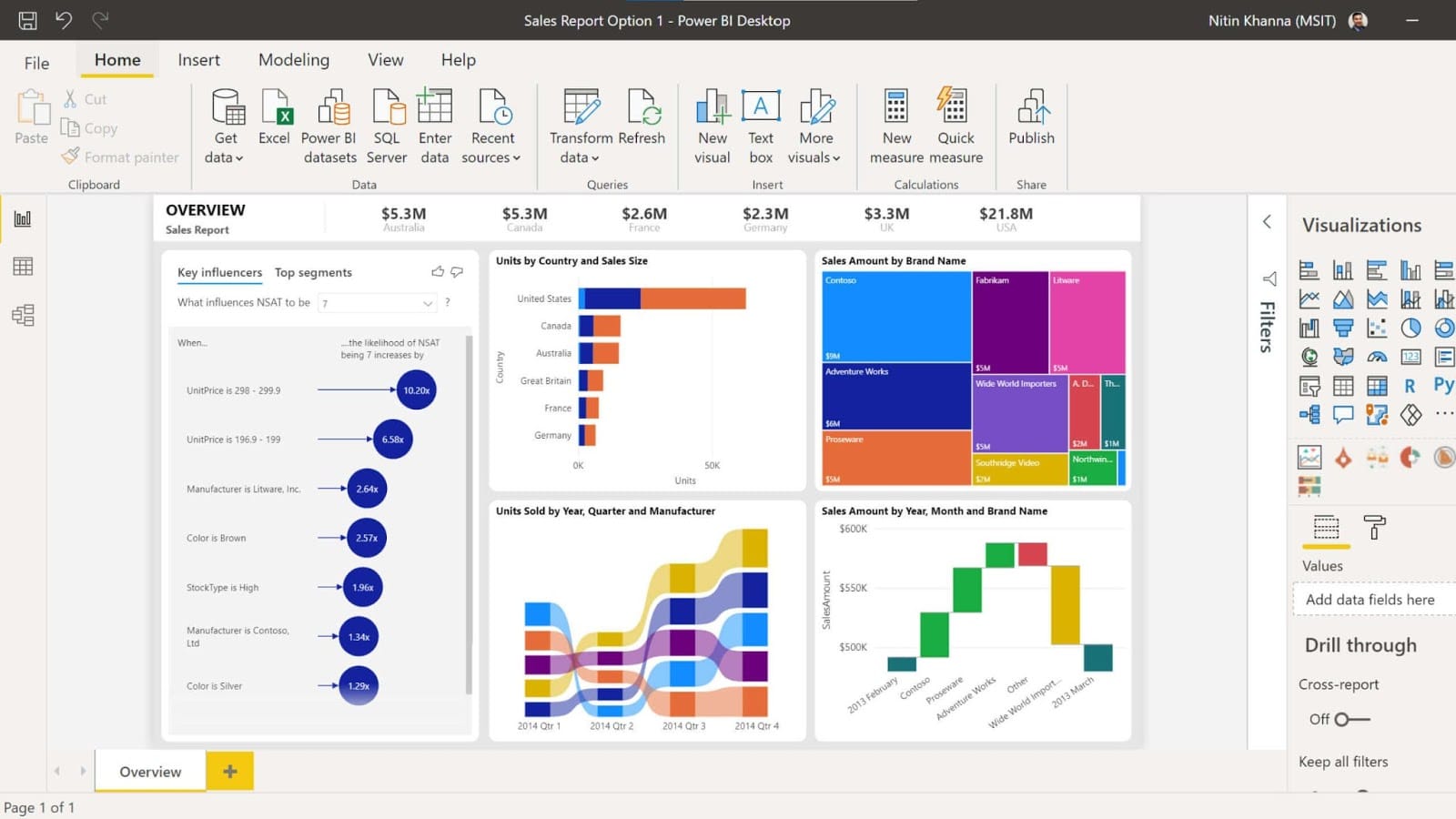
Features:
- Data visualization
- Built-in AI capabilities
- Tight Excel integration
- Prebuilt & custom data connectors
- Oversight of sensitive data
- Open connectivity framework
Pricing: You can start your Power BI Pro subscription for $9.99 user/month
Hubspot
Hubspot is a Jack of all trades type of SaaS automation tool because it helps automate marketing, sales, support, and more. The platform has all the components you need to run successful surveys and inbound marketing campaigns to stay top-of-mind for your leads and keep your customers happy, thus helping you run your gap analysis smoothly, without seeming pushy with your customer studies.
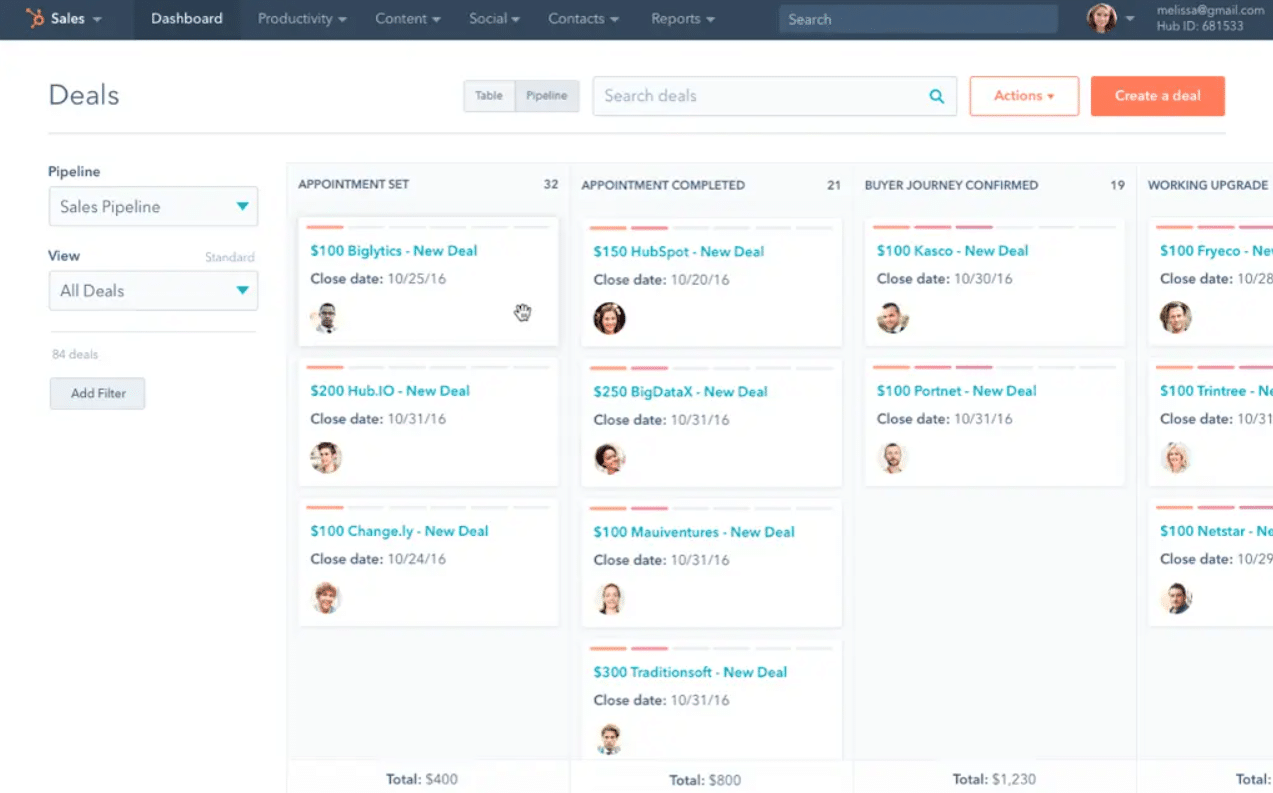
Features
- Advanced CRM capabilities
- Knowledge base
- Customer feedback
- Data quality automation
- Analytics
Pricing starts from $740/month
Custify
We saved the best for last – Custify helps businesses automate Customer Success. If the previous tools help you market to, acquire new customers, and get to know them better, Custify helps you increase their Customer Lifetime Value to boost retention and prevent churn, by monitoring user behavior and alerting you when customers don’t get value from your product. This proves to be extra helpful not only during your gap analysis efforts but more so after.

Features
- Automation of your workflows
- Customer 360 – oversee product adoption, customer lifecycles, and usage
- Growth – identify renewal, growth, and upsell opportunities
- Customer Health – define KPIs and assess your portfolio health
- Tasks and Alerts – always be a step ahead
- Dashboards & Reports – visualize customer success metrics and gain powerful insights
Pricing starts from $199/month.
Filling in the Gaps
A gap analysis crystallizes the challenges ahead and puts solutions into action that will get your organization to reach new business horizons. The most important step in the whole process of gap analysis is to fully understand the exact differences between your customers’ expectations versus their perceptions. These unique business insights will eventually help you take your SaaS business to the next level.
But at the end of the day, you shouldn’t get too bogged down with the gap analysis. Find the necessary time to efficiently complete your gap analysis for customer service, so you can quickly move along with the action plan and turn your SaaS business into a better-optimized organization.
Custify helps you strategically manage your customers’ life cycles, providing a better overall experience for your customers and helping you reach your desired future state even faster than expected.

